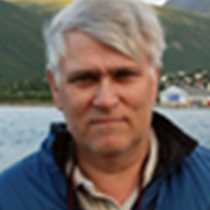South Shetlands, Deception Island
Good morning and WELCOME to Antarctica! Over the night we crossed important borders that define Antarctica: the biological border line, the Southern Ocean or Antarctic Convergence, and later in the night, the political definition latitude S60o.
Below the latitude S60o everything is guarded by the unique instrument established in 1961, the Antarctic Treaty. Below this latitude no claims of any land can be made and it was during the IPY year 1957-58 that scientists determined Antarctica was too important to have just a single nation control it. The treaty document is definitely a unique piece of human history.
The Antarctic Convergence is more the scientific definition of Antarctica. During winter this is how far the sea ice can extend north. It is here that the cold Antarctic water meets the less cold sub-Antarctic water and sinks. This creates an area were the waters mix; to establish where this important line is, we measure the sea temperature. We also watch the birds, as the ecology on both sides is different. Different bird species feed mainly on the two sides!
Early this morning we started to pick up large icebergs, always a good sign for approach to the Great White Continent. There were cheers and excitement during the iceberg competition; we soon had a winner, the first to spot an iceberg bigger than the ship.
Before lunch we were able to sight land, something every mariner is happy to see. This is the South Shetlands, a group of islands off Antarctica Peninsula. This land was first sighted by a British ship in 1819 and by the next summer sealers from England and the U.S. came to harvest the huge numbers of Antarctic fur seals. In a few years the whole population was wiped out.
Our afternoon outing was set for one of the islands, Deception, known to be one of the few active volcanoes in Antarctica. Plan A was to land on the outside, but huge white breakers along the beaches rapidly told us this would be impossible. Instead we headed inside the huge caldera and made our landing at Whalers Bay.
Everybody was able to visit two sites: the former Norwegian whaling station and later Base B, established during WWII as top secret British operation into Antarctica. If the fur seals stand out as the first major harvest from Antarctica, the industrial whaling from 1905 to about 1986 comes in second. A total of about two million whales were harvested during this time frame, with whale oil as the great revenue. We can still see the boilers, (active from 1909 - 31 and used to refine the whale oil), tanks to store the oil and water boats for supplying fresh water to the steam engines.
Whalers Bay also has great importance for Polar history. It was here in 1928 that Hubert Wilkins made the first flight with an airplane in Antarctica. His goal to fly to the Pole was never achieved but he was able to map a major area of the peninsula during his flights. You would think he was the first to fly in Antarctica but this was not the case; it was R.F Scott during his first expedition with his ship Discovery (1901-03). They had brought along a balloon.
Deception Island also has a strong American connection. Nathaniel Palmer, a sealer captain from New England, was most likely the first to find this sheltered harbor inside the caldera. He claims he climbed up to Neptune’s Window, like us, but also from here saw the mainland.
As we walked back to our landing spot along the tidal beach it was interesting to watch small marine creatures washed up: limpets, worms, kelp. Our diver onboard will introduce us to an almost unseen world below the surface as we continue our adventure in Antarctica. More to come!



